
MYSTERY SHOPPING
Mystery shopping is a form of consumer research used by retailers, suppliers and market research companies.
It is conducted by mystery shoppers, also known as mystery consumers or secret shoppers, who measure the quality of in-store customer service levels and other aspects of a store.
TABLE OF CONTENTS
WHAT IS A MYSTERY SHOPPING?
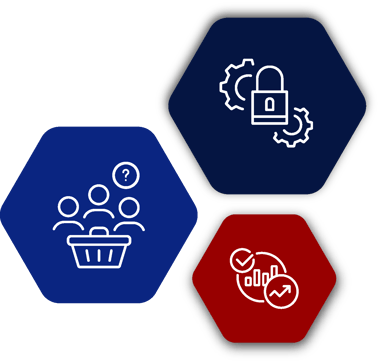
Mystery shopping is a form of consumer research. It is conducted by mystery shoppers who are often referred to as mystery consumers or secret shoppers.
The purpose of mystery shopping is to gather specific information about the research objectives without the mystery shoppers identity and purpose becoming known by the establishment that is being evaluated.
Since mystery shopping is a form of consumer research, it should follow the nine-step consumer research process.
WHAT PURPOSE DOES MYSTERY SHOPPING SERVE?
THE ROLE OF MYSTERY SHOPPERS
When mystery shopping first came onto the scene, many used it as a tool to prevent theft by employees at banks and stores. That was in the 1940s when private investigators posed as employees to uncover if anyone was stealing or undermining the company.
That is probably why many still argue that mystery shoppers are nothing more than spies. Such an argument worked 80 years ago since that was its very purpose. Try that self-same argument today, however, and you’ll not get far.
That is because the job of a mystery shopper has moved far beyond the simple role of catching out employees. That isn’t even a function that they fulfil today. Instead, you would hire mystery shoppers to evaluate all areas of your stores.
Their job includes monitoring the general aspects of your stores, including the quality of your customer service and how you display a particular product on the shelf. They can even check if there is wheelchair access into a store. No detail is too small or insignificant for them to observe. Mystery shopping is also not limited to any particular research. Instead, you would build each mystery shopping exercise on specific research objectives. And it’s all done for the sole purpose of improving your store.
That is why they play such an important role today. They enter your store with a more critical view than your average shopper and note all the fine details.
WHAT MYSTERY SHOPPER CAN TEACH YOU ABOUT YOUR BUSINESS?
As you will have read above, mystery shoppers play a critical role in helping retailers and suppliers to understand their businesses better.
But what exactly can they teach you?
Mystery shopping is a form of consumer research, and the very first step of the consumer research process is to develop your research objectives.
Your research objectives stem from your research problem. In other words, whatever you seek to have answered.
That means that there is no limit to the objectives of your research. It can also stem from any business-specific research problem. There are, however, some common examples which are listed below:

THE LEVEL OF YOUR CUSTOMER SERVICE
A primary role of mystery shopping exercises involves a deeper look at the level of your customer service. While you might pride yourself on your service, you will only know if it’s up to standard once a mystery shopper has been to your store.
Customer service encompasses a wide range of aspects, depending on what you want to test. It could include the level of product knowledge, the ability of your employees to answer questions about a particular product or even solve shopper needs. Remember mystery shoppers pose as customers.
That said, customer service also includes the level of respect that your employees display to your customers. For example, their tone of voice, attention to customer needs, and even general disposition when approached is all monitored.
And don’t forget that it can also include the attitude of your employees to each other.
THE LEVEL OF YOUR STOCK ON SHELVES
This is particularly popular amongst suppliers. When walking into a store, a mystery shopper will have a set of questions they need to answer.
These questions aren’t always ones that they need to ask your staff, though. They also include questions that they need to answer.
A few of these questions revolve around their observation skills. And they can focus on your stock on shelves. Such questions include, but are not limited to:
- Do you have adequate stock on your shelves?
- Are your stock levels well maintained?
- Is the stock on your shelf old?
- Does the product layout comply with the planogram for the category?
Asking and answering these questions can help you find out more about your store than you think. For example, in observing the stock levels on your shelves, you’ll be able to determine if you’ve employed the correct stock replenishment procedures.
THE LEVEL OF HYGIENE AND CLEANLINESS IN YOUR STORE
A critical aspect of running any retail business is to ensure that your stores are both clean and hygienic. And it’s not just for your food retailers. Regardless of what type of retailer you are, you need to adhere to hygiene and cleanliness standards.
Let’s take your average food retailer as an example here. Upon entering your store, a mystery shopper can measure your hygiene levels. They can observe and answer questions about the clothing and etiquette of your staff in service areas.
- Are they wearing gloves and antiseptic clothing?
- Are they wearing hairnets?
- Are they abiding by the Health and Safety Act?
Besides checking if your staff comply with health and safety rules, they can also check where food items are stored and how. An item might sit on your shelf for a month before it’s sold, for example, which means that a layer of dust could have gathered. As a retailer, you might not even know that, but a mystery shopper can pick that up.
Imagine a shopper picks that item up before you notice it. There’s a good chance they might not return. After all, once they’ve had such an experience, they could view all of the stock in your store as too old. A mystery shopper can save you this pain.
HOW TO SET UP YOUR OWN MYSTERY SHOPPING CAPABILITY
When it comes to setting up a mystery shopping capability for your store, there are two questions you need to ask yourself.
One: Is it necessary to have such a capability?
Two: After answering ‘Yes’, how do you go about setting it up?
WHY A MYSTERY SHOPPING CAPABILITY IS NECESSARY
Mystery shopping is a tool used by market research firms, various organisations and companies to measure, among other things, the quality of customer service.
In the 80 years that it has been around, it has become an increasingly important part of any retailer of suppliers strategy.
Having a mystery shopping capability allows you to get answers to an infinite number of questions that you have and will have about your stores, products, competitors, customers and everything in between.
SETTING UP YOUR MYSTERY SHOPPING CAPABILITY
So you’ve decided that you’re going to invest in a mystery shopping capability. Good decision.
Now comes the question: How do you want to approach it? There are generally two different approaches when setting up such a capability.
The first is to outsource it. That is the most popular approach, and it makes sense. What could be better than to get an unbiased opinion of your store?
The second approach is to keep it in-house. We’ll delve into the advantages and disadvantages of each in the next section to help you make your final decision.
If you don’t know which approach to take, and that’s even after reading the pros and cons of each, then here’s a question that you can ask yourself: is there an external provider who can perform this function better than you, and at a cheaper rate? Let your answer be your guide.
ADVANTAGES AND DISADVANTAGES OF MYSTERY SHOPPING APPROACHES
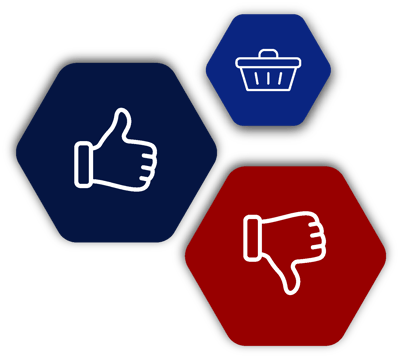 Research is a critical part of every business and mystery shopping is a fantastic method of carrying out this research. As for which method you decide on, that comes down to whether or not you see this function as a core part of your business.
Research is a critical part of every business and mystery shopping is a fantastic method of carrying out this research. As for which method you decide on, that comes down to whether or not you see this function as a core part of your business.
Another way of deciding is to weigh up the pros and cons of each method. Just to remind you, the two approaches are outsourcing and keeping it in-house.
OUTSOURCING
ADVANTAGES:
- There is less risk of being associated with your permanent staff. If your employees find out that a mystery shop is currently on the go, it can contaminate any data you collect.
- A mystery shopping agency has both the right infrastructure and skilled staff who are ready to go at any time. That makes using an agency highly convenient.
- An agency that specialises in offering mystery shopping services will continually refine its model as the industry changes. That means you don't have to worry about whether or not they are up to date with industry standards.
DISADVANTAGES:
- A mystery shopping agency will typically have a variety of clients. That means your research project won’t necessarily be their number one priority.
- After giving an agency a brief for the mystery shop, you will have less control over how that process unfolds.
IN-HOUSE
ADVANTAGES:
- Mystery shopping will become a part of your core culture.
- You’ll have complete control over the research objectives as well as how the mystery shopping exercise is conducted.
- In keeping the mystery shopping capability in-house, your team can focus exclusively on your research project.
DISADVANTAGES:
- If you’re not always running a mystery shopping exercise, you could essentially be wasting money that you could use elsewhere in your retail business.
- Since you’re a retailer first, and a mystery shopping firm second, it can prove difficult to keep up to date with industry standards.
THE NINE STEPS TO MYSTERY SHOPPING SUCCESS
Undertaking any mystery shopper exercise is a curious endeavour. Why? For one, you don’t simply walk into a store, look around, and then walk out to report what you found.
If you want your exercise to be a success, you need to plan for it. And not just a general plan that outlines what you want to do. You need to plan every single step you’re going to take in detail.
That’s where the nine-step consumer research process comes in.
A well-organised consumer research process produces valid, accurate and reliable data that you can use as the basis for taking action in your business. Here is a breakdown of the nine-step consumer research process:
STEP 1: DEVELOPING YOUR RESEARCH OBJECTIVES
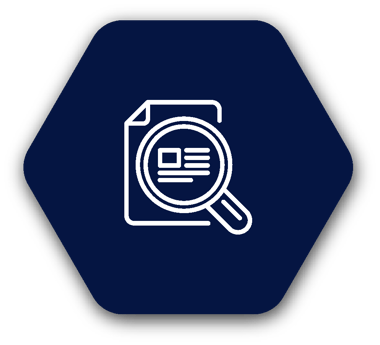
The first step of any consumer research process involves developing your research objectives. What is most exciting about this step is that it indicates that mystery shopping or any other type of consumer research is not limited in the questions it seeks to answer.
In the business context, the marketing manager usually sets up a meeting to discuss the objectives. They will meet with whoever is in charge of research and identify the problem they want to solve. This meeting will also include coming up with a question related to the problem that needs answering.
As an example, you may want to understand the different levels of customer service between a large and an independent pharmacy. Thus, your question would be this: which pharmacy, between large pharmacies and independent pharmacies, provides better customer service?
As mentioned before, there are two approaches to mystery shopping success.
You can go the in-house route and brief a team of research individuals that you employ. If that is not appealing, or if you don’t have the time, you can outsource this function.
STEP 2: COLLECTING ANY SECONDARY DATA
Once you have decided on what your research objective will be, it’s time to collect any secondary data that you can find.
Secondary data has already been collected and has the same or similar research characteristics as your new intended consumer research project. Secondary doesn’t necessarily have to be a past recent study and could include different forms such as sales data, industry standards and others.
This secondary data can also originate from two different locations. It can either be an external source or an internal source. By external, we mean it includes any source not created by your company. Examples could thus be any independent research, syndicated sources, governmental departments and others.
Conversely, your internal sources would be any data that is collected within and about your company. Company reports are one such example of an internal source. It can also include data collected in previous studies similar to the one that you are conducting.
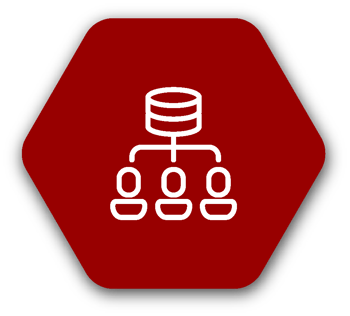
STEP 3: DESIGNING YOUR PRIMARY RESEARCH
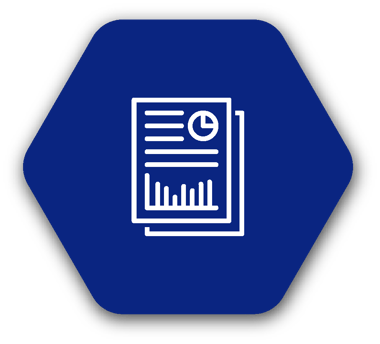
The design of your research is founded on the primary purpose of your study. That means, if you are interested in taking a more exploratory investigation, you need to consider qualitative techniques. If you want to look at descriptive or measurable information, we would advise a quantitative study.
You would use qualitative research methods to explore and understand the underlying reasons for behaviours that you can't identify through conventional means. It thus involves the process of gathering data by observing the verbal and non-verbal behaviours of people.
Meanwhile, quantitative methods focus on addressing your research objective through empirical assessments. Quantitative methods include observational, experimental and correlational research. It also requires a structured set of questions and a large sampling group.
STEP 4: DESIGNING THE QUESTIONNAIRE
When designing your questionnaire, you need to consider a few elements. The reason is that you need to design it so that your questionnaire provides you with both valid and effective answers.
One way of doing that is to ensure your questions are both clear and concise. That means that each question you ask must have one subject. For example, ask the question, ‘How long did it take for a staff member to greet you?’ Or ‘What did a staff member say when greeting you?’ Never ask them together.
In going the route of asking double-barrel questions, you’re likely to receive unclear answers. Any unclear answers can corrupt your findings and negate the point of doing this exercise. Also, one part of the question might be answered while the other half will be completely ignored. Specificity with your questions is vital.
Of course, there are other elements to consider. Another is that you have to be careful of how you word your questions. Why? A question, when worded incorrectly, can end up leading your subject, which can also ruin any data you collect. It comes back to obtaining that objective answer. A question that will give you an effective answer is worded objectively.
Once you’ve decided on the questions that will make up your questionnaire, it’s time to look at the structure. It's best to use such an approach for broad projects.
You can choose between dichotomous questions (a question with only two possible answers), multiple-choice questions, scale questions, and so on. You can also combine these, depending on what your project entails and the overarching question you are attempting to answer.
Let's go back to our example of “Which pharmacy, between large pharmacies and independent pharmacies, provides better customer service?”
Since this example focuses on the level of customer service at various pharmacies, we concentrated on questions around the behaviour of employees.
The scenario we planned was this: we would pose as a customer who had recently joined a local gym and was looking to buy supplements to gain muscle and lose fat.
Below are the questions that we asked during each mystery shop.
- Did a staff member acknowledge you within 30 seconds of entering the store?
- If you were greeted, what was said?
- Upon getting to the shelf, did any staff approach you to ask if they could help?
- Was the staff member friendly and approachable?
- Did the staff member ask you about your goals?
- Did the staff member have enough knowledge to provide with you relevant advice?
- Rate the level of advice concerning how to reach your goals with the products on offer that you got. Rate out of 10. 10 being the best score.
- Was there a product (in stock) on offer that was in line with the advice?
- Did the staff member offer any additional information without you asking?
- Did the staff member make you feel comfortable throughout the process? Rate this out of 10, with 10 being the highest score.
STEP 5: SELECTING A SAMPLE
Selecting your sample is an important part of your research project. We could argue that is it one of the most critical parts because if you get it wrong, you could end up with skewed data.
There are two different types of methods to choose from:
- Probability Sampling; and
- Non-probability Sampling.
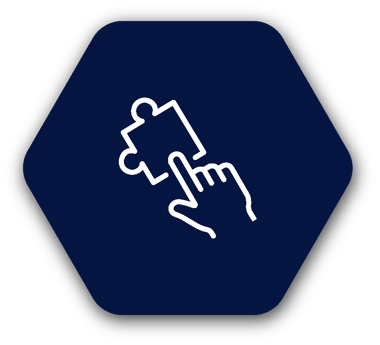
For our mystery shopping exercise, we used the non-probability sampling method.
Since we chose 10 pharmacies to visit, we used the quota sampling technique. This technique is where you select a sample based on pre-specified characteristics. This is so that the total sample has the same distribution of characteristics in the population begin studied.
The stores that we selected to visit were all within the same area, and it can be argued they all catered for the same shopper. We visited five large pharmacies and five independent pharmacies.
STEP 6: MANAGING FIELDWORK
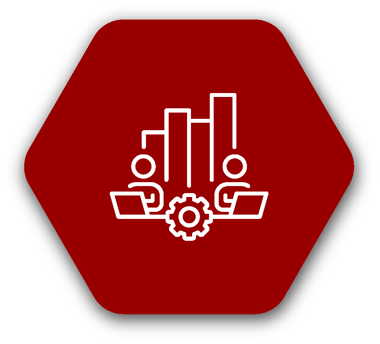
The number one characteristic for good field workers is objectivity. Without objectivity, the result should be obvious: you'll contaminate any collected data, and your efforts will be all for nought. For field workers to ensure that they are objective throughout any interview process, they need to use what is known as ‘bracketing’.
Bracketing is a technique in which you set aside your own culture, beliefs, and norms to interview without bias. We advise that whomever you choose to conduct your fieldwork needs to know how to do this.
Also, no matter how good your field workers think they are, you need to give them continuous training and mobile field software tools to maintain their high standard of work. At DotActiv, we have field marketing software that makes it easy to manage any team you might have out in the field.
STEP 7: CONDUCTING THE FIELDWORK
Once you have briefed all the relevant people, it’s time for them to enter the field. That doesn’t mean you can now relax while they do all the work, though. You have a responsibility to ensure that they do the work.
One way of checking that they are doing their work is to contact the stores or companies that the field workers will visit. However, that would be inefficient.
A better solution would be to use a comprehensive mobile software solution that confirms that the mystery shopper was indeed at the correct locations while answering the relevant questions and in the correct format.
DotActiv’s mobile software solution, built on Android, automates store visit cycles, tracks users using GPS and guides workflows with pre-built customisable questionnaires.
STEP 8: PREPARING AND ANALYSING THE COLLECTED DATA
Your work is not complete once the data comes in. You could argue that it’s only the beginning. It’s now time to prepare and clean the collected data. That nomally means loading all of the answers into a central database. Once in your database, your data can then be analysed and drawn into reports.
In most instances, you will also need to clean your data. That involves conducting checks to ensure that the data collected was accurate and that there are no duplications. It’s also important to check that all data entries are in the correct format. While it can be a laborious exercise, regardless of your sample size, it’s needed.
For example, if your data is not clean, when you run it through whichever statistical programs you use to test its reliability, it will come up short. If it comes up short, your data is essentially invalid, which negates the purpose of your project.
STEP 9: PREPARING YOUR REPORT
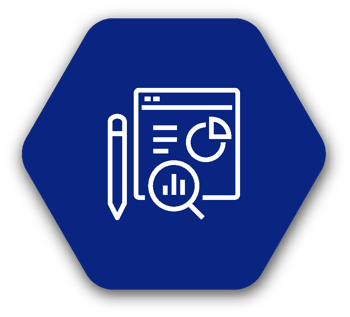
The final step in the consumer research process is preparing and presenting the report. Any data gathered needs to fit into the requirements as set out at the beginning of your process.
Ensure that you present your data in a way that it speaks to the research objectives. What is very important to note is that having the data with you is not enough.
You need to present it so people enjoy it, understand it and support taking actions based on the data.
WHAT MAKES MYSTERY SHOPPING TRULY VALUABLE ?
The mystery shopping exercise is impartial because the identity and purpose of the mystery shopper are unknown to the store or organisation under evaluation.
Businesses often stumble upon the data that they happen to have generated. With mystery shopping, specific data is collected on purpose, which makes it highly valuable.
Data collected through mystery shopping can contribute to your growth strategy. Launching initiatives is easier when it's supported by accurate and impartial data.
